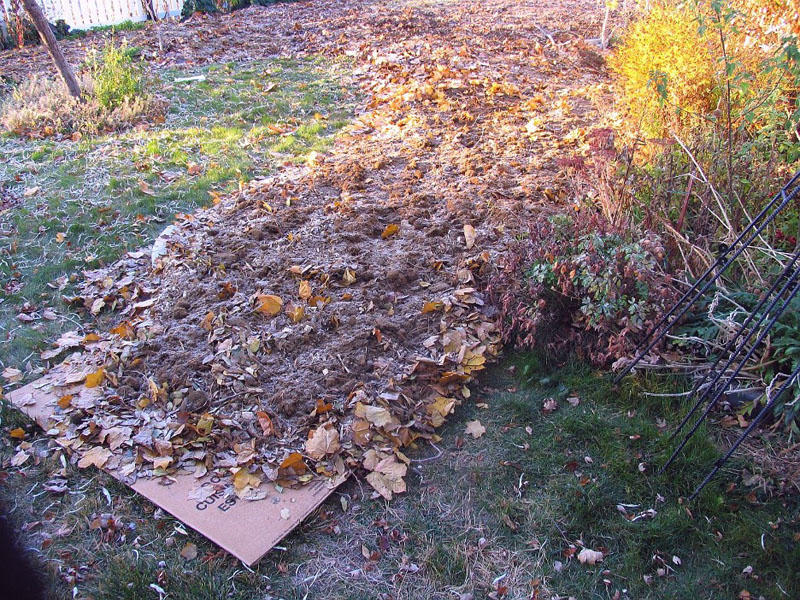Everyone that owns a home likely has a lawn that requires regular care and maintenance but doesn’t give anything back to those that care for it—whether it is only a few square meters or a few acres. What if instead of caring for a lawn you could take care of your very own food forest that provided fresh food to your family and community? Grass lawns require continual mowing, turn yellow in droughts, and offer no productive yields in return for that time and energy you spent. Food forests, while they do require care and maintenance, also provide fresh produce, sequester more carbon than lawns, improve soil quality over time, foster positive relationships between people and the environment while creating habitat and food for vital pollinator species.
A food forest is a permaculture system that mimics natural forests with an emphasis on producing food. A seven–layer system is utilized which includes trees, tall shrubs, low shrubs, herbs, root crops, ground cover crops and climbers or vines as seen in the image by Paul Kearsley. It is an integrated system intended to work with nature in order to reduce the amount of pesticides, fertilizer and water required to maintain that system. It is not a monoculture, does not consist of rows and straight lines and will not look clean and tidy all of the time.
The steps required to transform a lawn into a native food forest include, creating a simple plan to get started, researching native plant species, collecting your seeds, preparing your soil, planting your seedlings, watering and fertilizing your plants, then harvesting and sharing your yields with friends, family and neighbors. Then repeating the process over again.
Step one, create a simple plan to get you started. Decide what is manageable for you. This plan could be as small as planting one tree each year, or as large as converting your entire lawn in one season. Remember to keep it simple and be flexible—you may not be able to find certain species, or some plants may not do as well as desired.
Next, research the plant species native to your area with a strong emphasis on perennials such as currants or chicory. Native plants are defined as naturally growing plants in the area and are well adapted to your region. Perennial plants, unlike annuals, return every year and require less maintenance. Biodiversity is key in order to ensure your food forest can generate a natural resistance to changing climate, pests and disease. As you research you may become overwhelmed by information—there are hundreds of thousands of plants known, and thousands being discovered every year. Go back to your plan and remember what type of species you want to focus on. If you are thinking of converting your entire lawn in one season think back to the seven layers of a forest. Consider growing apple, pear or cherry trees, raspberry, blackberries or saskatoon berry shrubs, herbs such as lemon mint, buffalo bean or anise hyssop, root crops like carrots and potatoes, ground cover crops like wild strawberries, and lastly, climbers like grapevine or clematis.
Step three, collect your seeds or cuttings. This can occur in a variety of ways but if you are going out to find native species growing naturally be respectful and remember to never take rare species. Only take less than half of what you need in order to ensure the existing plants are not damaged. Some species can be found in seed libraries or at garden centers.
Once you have some species ready to plant you will want to prepare your soil for planting. You can use a variety of methods but one of the least labour intensive methods is sheet mulching. Sheet mulching requires cardboard and a thick layer of mulch to be watered down at each step of the process in order to ensure your lawn decays and contributes to the soil. Avoid soil compaction that can harm some species through the use of stepping boards or pathways.
Then, plant your seeds, seedlings and cuttings. You may notice some plants do better than others, focus your energies on the plants that are successful in order to reduce the amount of maintenance required. Hopefully the successful plants are your favourite foods.
Step six, nurture your plants in whatever way they may need. Instead of using fertilizers or adding other chemicals create a tea compost, worm compost or other forms of compost to enhance the soil. Soil health is critical and can be thought of as its own living community. Tea compost is simple and only requires a large bucket, water and cuttings (possibly your neighbours lawn trimmings).
Step seven, when your plants are ready harvest and share the rewards! Remember to let some go to seed for the following year. The seeds can be collected but perennials will self-sew for the following year. With this process of self–seeding you can reduce the amount of planting the following year, but you may still wish to add more diversity with new varieties.
Finally, prepare for winter and make shelter for your pollinator species like honeybees and hummingbirds. Pollinators are vital for every successful garden so instead of raking up leaves and other plant matter leave it to the bees. This process of leaving behind matter to decay will also enhance the quality of your soil over time.
These steps are not necessarily linear, some steps may continue throughout the year such as collecting seeds and cuttings. At every step it is important to remember that nature is complex and ever changing. What grows well one year may not grow well the following year. In order to simulate your own healthy food forest, it is important to incorporate diversity by planting different species and creating habitats for insects and birds to increase pest resistance. Use natural mulch, compost and fertilizer in the form of fallen leaves and trimmings, allowing decomposers to do the work for you. Let your food forest be messy and always leave seeds behind to sew themselves the following year. Gradually you will notice your food forest requires less water and actually works to conserve water.
However, if all of this seems too overwhelming a simplified alternative is to create a native prairie grassland. It could include grasses like prairie June grass, Indian rice grass, Blue Grama grass and wildflowers like smooth blue aster, prairie coneflower, and Indian breadroot. Prairies sequester just as much carbon as forests over a much shorter period of time, will conserve water, and increase soil health. In conclusion the lawn you mow every week isn’t working for you—create a food forest that will.








